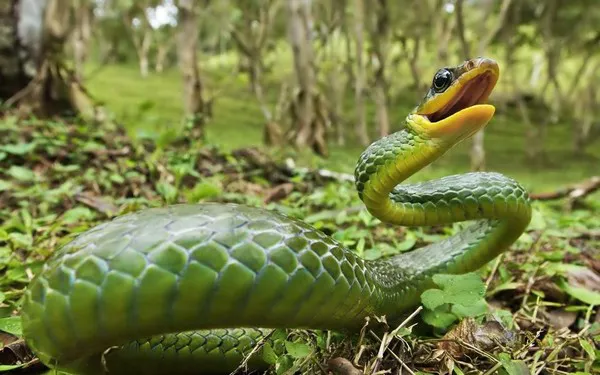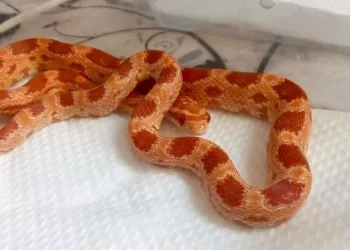When it comes to choosing a pet, many people are drawn to the allure of reptiles. Among these fascinating creatures, the corn snake stands out for its striking colors, gentle temperament, and ease of care. But before you welcome a corn snake into your home, one crucial question looms large: What size enclosure does a corn snake need? Let’s slither into the details and find out!
Meet the Corn Snake: A Reptilian Delight
Corn snakes, scientifically known as Pantherophis guttatus, are native to North America. They are often found in fields, forests, and near human settlements. Known for their beautiful patterns, corn snakes come in a variety of colors, including orange, red, and even striking albino varieties. But beyond their looks, these snakes are known for their docile nature, making them a popular choice for first-time snake owners.
The Basics of Enclosure Size
The general rule of thumb is that your corn snake’s enclosure should be at least 20 gallons for a juvenile and increase to at least 40 gallons as they grow. This may seem straightforward, but several factors influence how much space your snake really needs.
Age Matters: Younger snakes can thrive in smaller enclosures. However, as they mature—typically reaching lengths of 4 to 5 feet—larger spaces become essential.
Length vs. Height: While many may think taller enclosures are ideal, corn snakes are more terrestrial. A long, low enclosure is better suited for their natural behaviors.
Ideal Dimensions for Corn Snake Enclosures
For juvenile corn snakes, aim for a minimum enclosure size of 30 inches long, 12 inches wide, and 12 inches high. As they grow, a suitable adult enclosure would be about 48 inches long, 18 inches wide, and 12 inches high. These dimensions provide ample space for your snake to explore, bask, and hide.
The Importance of Space for Behavior
Corn snakes are naturally curious and active creatures. In their enclosures, they need space to express their instincts:
Exploration: Snakes love to explore their surroundings. A larger enclosure allows them to engage in this natural behavior.
Basking: Corn snakes enjoy heat. A properly sized enclosure can accommodate heat sources and basking areas.
Hiding: Snakes need places to feel secure. An adequately sized enclosure can provide multiple hiding spots.
The Shape of the Enclosure
The shape of the enclosure is just as critical as its size. Corn snakes thrive in environments that mimic their natural habitat. Opt for a rectangular or horizontal enclosure rather than a tall, narrow one.
Why Horizontal Matters
Corn snakes are ground-dwelling animals. A wider enclosure allows them to move around comfortably and explore without feeling cramped.
Materials and Types of Enclosures
When it comes to materials, there are several options:
Glass Terrariums: These are popular due to their visibility and ventilation. They also allow you to easily monitor your snake’s health.
Plastic Tubs: These are lightweight, easy to clean, and provide good insulation. They can be an economical option for larger setups.
Wooden Enclosures: These can offer better insulation and aesthetics but may require more maintenance.
Ventilation: A Must-Have Feature
Regardless of the enclosure type, proper ventilation is crucial. Corn snakes are prone to respiratory issues, especially in poorly ventilated spaces. Ensure your enclosure has adequate airflow, which may involve using mesh lids or vents.
Substrate Choices: Comfort and Cleanliness
Choosing the right substrate for your corn snake’s enclosure is essential. Here are some popular options:
Aspen Shavings: A favorite among many snake owners, aspen shavings are absorbent and allow for easy digging.
Coconut Fiber: This substrate is natural and retains moisture well, which can be beneficial for humidity control.
Paper Towels: For easy cleanup, paper towels are a simple solution, especially for juveniles.
Decor: Making It Cozy
To create an inviting home for your corn snake, consider adding decorations:
Hiding Spots: Use commercially available hides or create your own using rocks, logs, or plastic containers.
Climbing Structures: Although they aren’t heavy climbers, providing some low branches can stimulate their environment.
Water Bowl: A shallow water bowl is a must. It should be big enough for your snake to soak in but shallow enough to prevent drowning.
Heating and Lighting: Getting It Right
A proper heating setup is crucial for a corn snake’s health. They require a temperature gradient in their enclosure:
Warm Side: Aim for 80-85°F during the day, with a basking spot reaching up to 88-92°F.
Cool Side: Keep the cool side around 70-75°F. This gradient allows your snake to thermoregulate.
Heat Sources
Use under-tank heaters or heat lamps, but be sure to monitor temperatures regularly. Additionally, a thermostat can help regulate the heat to prevent overheating.
Humidity Levels: The Goldilocks Zone
While corn snakes are quite adaptable, maintaining proper humidity is essential. Aim for a humidity level of around 40-60%. This can be achieved by:
Regular Misting: Lightly misting the enclosure can help maintain humidity.
Water Bowl: The water bowl also contributes to humidity levels.
Handling and Socialization
Corn snakes are known for their friendly demeanor. Regular handling helps them become accustomed to human interaction. However, avoid handling them immediately after feeding or during shedding. Always support their body and avoid constriction to keep them comfortable.
See Also: Do Corn Snake Bites Hurt?
Signs of Stress in Your Corn Snake
Understanding your corn snake’s behavior is key to ensuring its well-being. Signs of stress can include:
Hiding Excessively: While snakes love to hide, constant hiding can indicate stress.
Aggressive Behavior: Striking or excessive hissing can signal discomfort.
Refusal to Eat: A loss of appetite can be a sign of stress or illness.
Common Mistakes to Avoid
When setting up your corn snake’s enclosure, here are some pitfalls to avoid:
Ignoring Size Requirements: Underestimating the space your snake needs can lead to health issues.
Poor Ventilation: Failing to provide adequate airflow can result in respiratory problems.
Overcrowding: Placing too many decorations or hides can restrict movement.
The Benefits of an Enriched Environment
An enriched environment promotes your snake’s physical and mental health. Here’s how:
Physical Health: A larger space encourages movement and exercise, reducing obesity risks.
Mental Stimulation: Interactive decor and hiding spots keep your snake engaged and reduce stress.
Creating a Maintenance Routine
Maintaining your corn snake’s enclosure doesn’t have to be overwhelming. Create a routine:
Weekly Cleaning: Spot clean daily and perform a full clean weekly.
Monitor Temperatures: Check the temperature gradient daily.
Change Water: Refresh the water bowl every day to ensure cleanliness.
Conclusion
In conclusion, when it comes to what size enclosure a corn snake needs, aim for at least 20 gallons for juveniles and 40 gallons for adults. Prioritize horizontal space, proper ventilation, and a comfortable environment filled with enriching decorations. Remember, a happy snake is a healthy snake!
By providing your corn snake with the right space and care, you’ll foster a long-lasting bond and enjoy the delightful quirks of your scaly companion. So, gear up, get that enclosure ready, and prepare for the mesmerizing journey of snake ownership!
Related Topics:



























